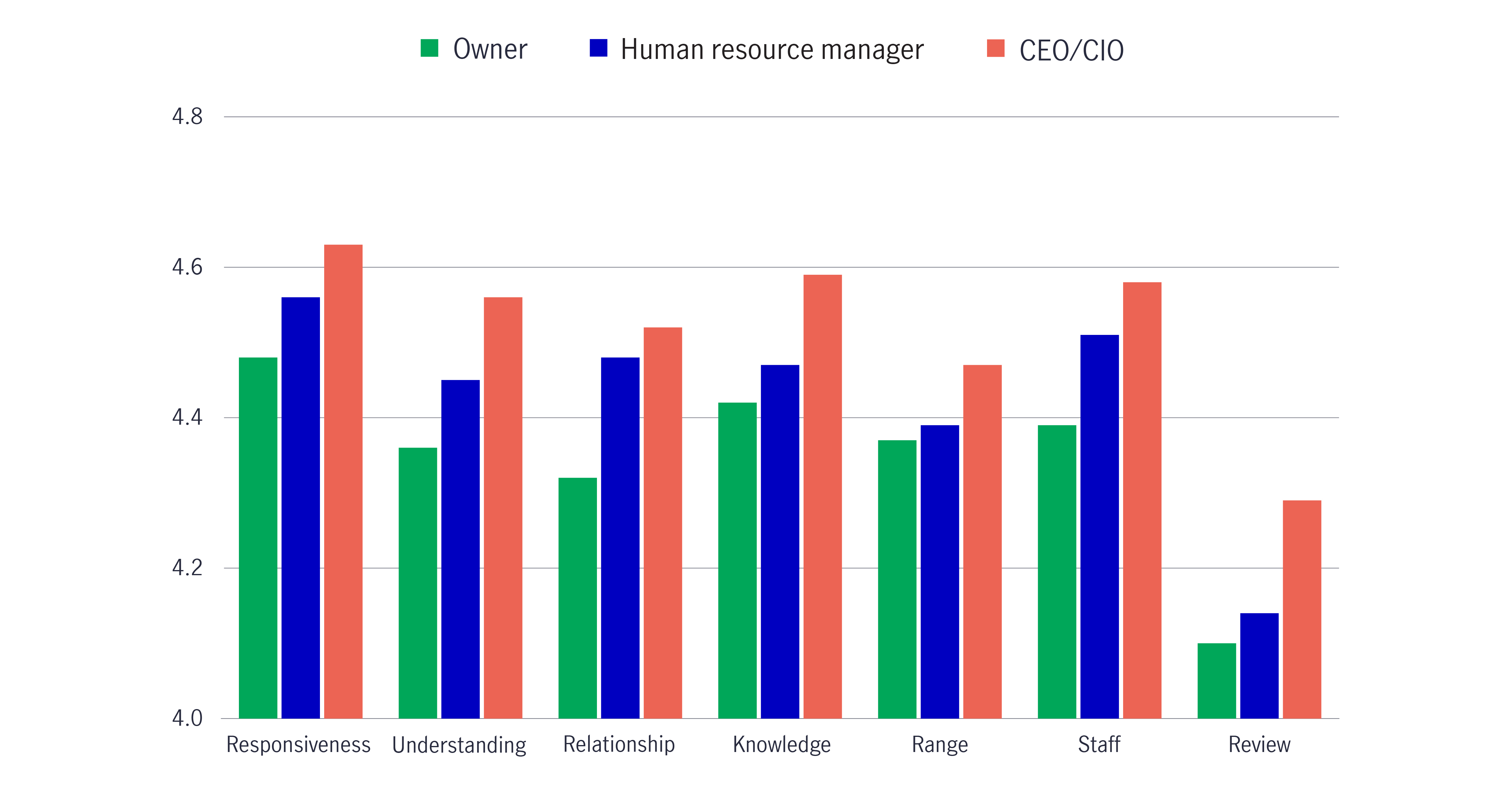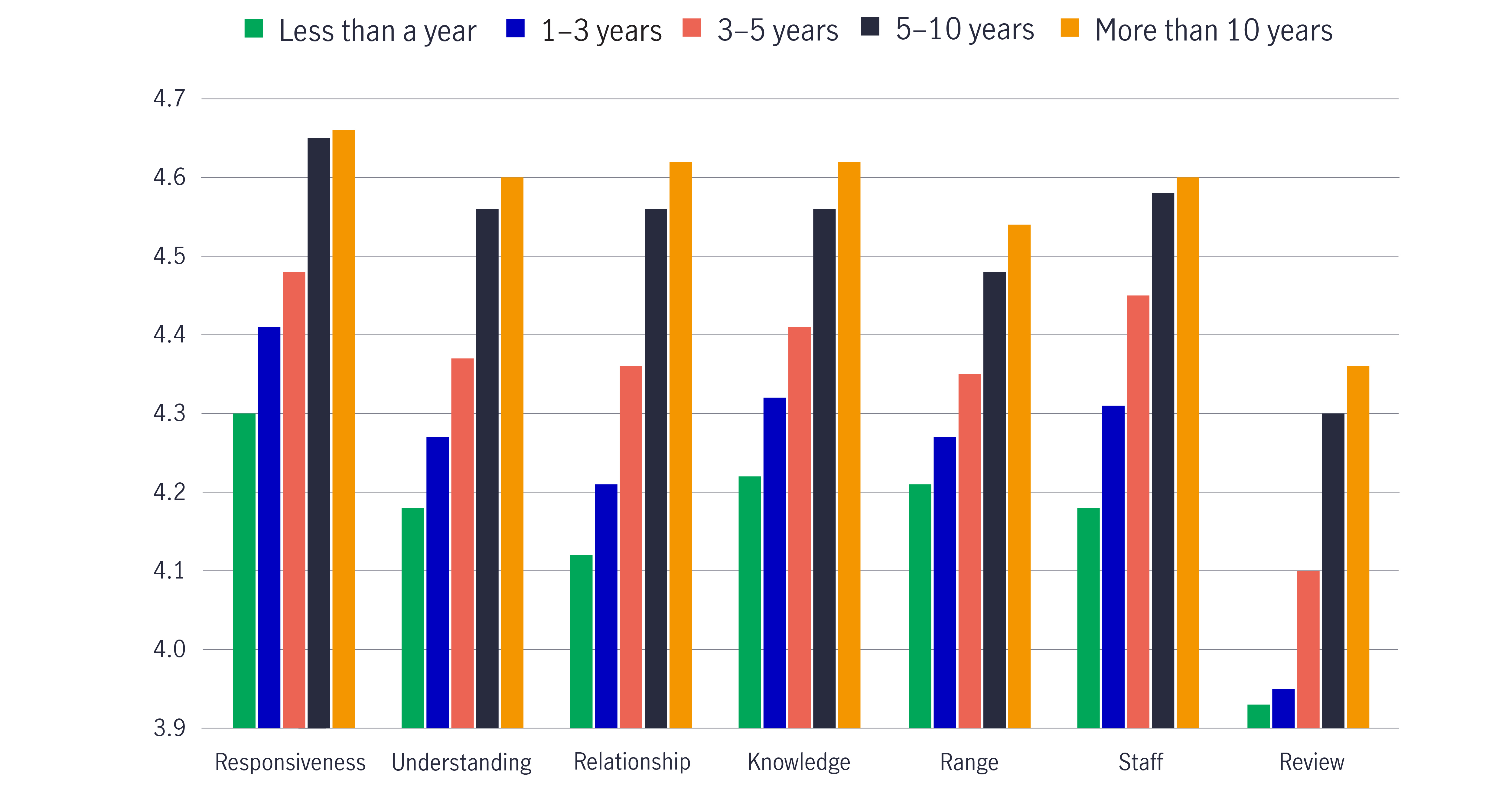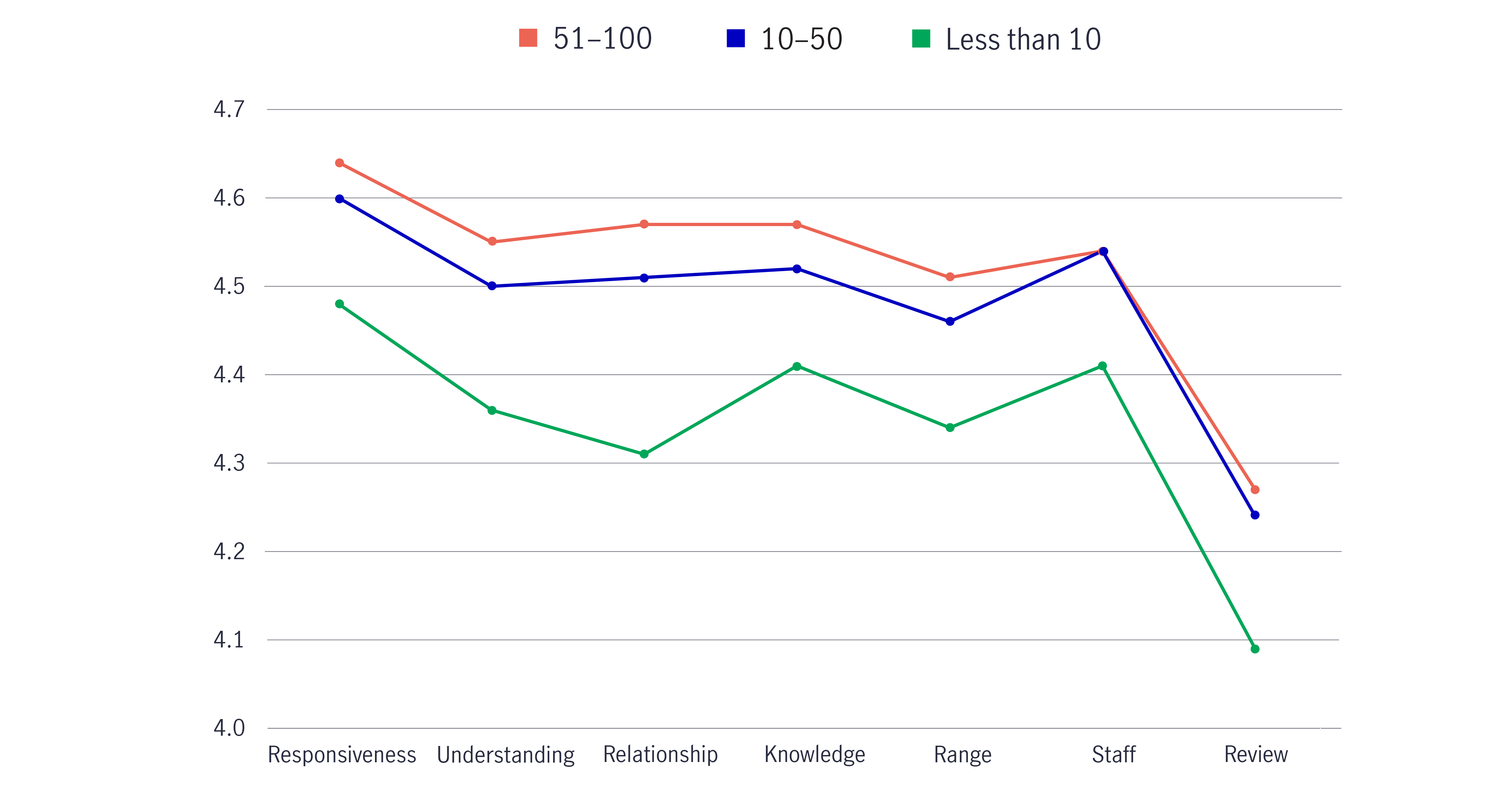Are your plan sponsors happy with your service?
How do plan sponsors rate the services they receive from their TPA? Recent research from Business Health, an international consulting firm, shed some light on satisfaction levels, including where service expectations are—and aren’t—being met. We’ll share insightful research and five tips to help you effectively build and grow your business relationship.

1 Be responsive
You can start by asking yourself: Does my service delivery match plan sponsor expectations?
While retirement plan administration can be technical and complex, it’s still a people-oriented service business. Plan sponsors rated third-party administrators' (TPAs') responsiveness as the number one attribute, and the quality of the support staff came in a close second.
- 53% of plan sponsors reported their service requests were responded to within four hours and 78% within one working day
- 91% can name their TPA and 96% expect to have an ongoing business relationship
Tip—Make sure you have someone available to respond to plan sponsors promptly, even if it’s just to say you’re looking into their request and will respond when you have an answer.
2 Schedule regular meetings and communications
Another important question to answer is if your communication program keeps you top of mind with your clients.
- More than half (58%) of clients want to see their TPA (either virtually or in person) at least once a year
- 62% want a newsletter/blog
- 45% are interested in seminars or webinars
- 42% want to connect over the phone at least quarterly
Tip—All clients have different preferences for how often they’d like to meet and whether face to face or virtual, so consider asking each one these questions. You can then create a communications strategy that includes (from most frequent to less frequent) regular email touchpoints, webinars, and meetings.
3 Don’t forget about the business owner
You may not work with the business owners regularly, but make sure you consider their role. How would business owners rate your service? Would their rating be different from the employees you work with every day? Do business owners know what you’ve accomplished in the last 12 months?
Business owners are often the ultimate decision makers, but it seems they’re often overlooked, and the Business Health research shows they’re less satisfied with their TPA’s performance than other plan sponsor contacts across all key service delivery areas. Owners may be far more demanding about service and support expectations.
Business owner satisfaction in key service areas

Source: Business Health TPA Client Satisfaction Survey results, 2025. For illustrative purposes only.
Tip—Even though you may not have day-to-day interactions with the business owners, it’s important they’re aware of all you do for their plan throughout the year. Don’t assume that they know—make sure you tell them. Doing so can help you maintain meaningful and professional relationships.
4 First impressions do matter—get it right from the start
Being clear with new clients can help set the tone for a strong relationship. Do you actively set and manage new client expectations? How strong is your onboarding process?
It’s no surprise that long-term clients are very happy with their TPA’s service; otherwise, they’d likely have found another partner. Seeing the relatively low scores given by new clients, however, is somewhat concerning.
This drop in satisfaction isn’t usually due to poor service but instead because of unmanaged client expectations. New clients may not understand your service standards. Without your direct guidance, they may have an unrealistic view of just where your service proposition begins and ends, along with standard time frames for completing tasks.
TPA client satisfaction in key service areas

Source: Business Health TPA Client Satisfaction Survey results, 2025. For illustrative purposes only.
Tip—When bringing new clients on board, start by clearly outlining what they can expect from your services. Take the time to walk them through your standards and typical timelines. Doing this can help prevent misunderstandings and ensure they have a realistic view of your services.
5 Small doesn’t mean unimportant
You know how important every client is to your practice. Do you acknowledge the unique needs of small plans and tailor your service package?
On average, almost half (42%) of the plans serviced by a TPA firm have between 10 and 50 participants, and more than a third (39%) have fewer than 10 members. While the demands of small plans are generally quite different from those of a 100+ member plan, many TPA firms struggle to fully satisfy the service requirements (or perhaps expectations) of their small plan sponsors.
Small plan satisfaction in key service areas

Source: Business Health TPA Client Satisfaction Survey results, 2025. For illustrative purposes only.
Tip—Consider customizing your approach and demonstrating your understanding of small plan clients. By tailoring your approach, you may be able to better meet their expectations, which can help enhance client satisfaction and show clients how much you value them.
Keep plan sponsors satisfied with your retirement plans
Don’t just assume you know what your plan sponsors expect from you. All clients are unique, so consider asking each one for feedback regularly and adjust your service strategy as needed to help keep them satisfied with your services. Following these tips can help you build and maintain strong, professional relationships so you can become a trusted partner.
Important disclosures
Important disclosures
This publication includes the results of commissioned Anonymous Staff Survey, TPA Adviser Satisfaction Survey, CATScan™ Client Survey, and Business Benchmarking diagnostics conducted by Business Health Pty Ltd on behalf of Manulife John Hancock. Business Health Pty Ltd and Manulife John Hancock are not affiliated, and neither is responsible for the liabilities of the other. The information contained in this publication is provided for informational purposes only and should not be relied upon as the sole basis for making business, legal, or investment decisions. Business Health’s tools have been created to allow the owners of TPA businesses to measure and benchmark their firm’s performance against a relevant, high integrity and contemporaneous marketplace data set. All statistics, unless otherwise specified, have been provided by Business Health Pty Ltd and have been compiled from data collected through the use of proprietary third-party administrator diagnostic business tools. Business Health uses secure, purpose built, proprietary web portals to collect information individually and directly from the owners of TPA firms, their employees, their clients and their referring financial advisor business partners. All statistics, benchmarks and insights are compiled from the latest data contained in Business Health’s data warehouse or a subset based on an appropriate/applicable time period at the time of production. As of June 22, 2025, in total, data has been provided by 2,881 TPA staff members, 6,156 TPA clients, 472 TPA referral partners and 554 TPA firms.
The content of this document is for general information only and believed to be accurate and reliable as of the posting date but may be subject to change. It is not intended to provide investment, tax, plan design, or legal advice (unless otherwise indicated). Consult your own independent advisor as to any investment, tax, or legal statements made.
This is intended for an intermediary audience.
MGR0715254457955



